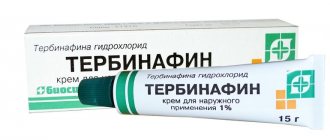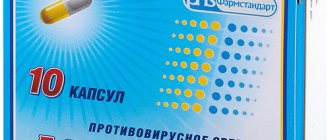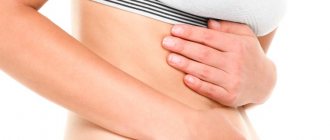There is no need to say how important the ovaries are for a woman’s body. The sex hormones produced in them affect the functioning of all vital organs and systems of the body. Estrogen receptors are found not only in the organs of the reproductive system, but also in the skin, heart, bones, urinary organs and even in the conjunctiva of the eye. This explains why, during menopause, with the occurrence of a serious hormonal deficiency, changes occur in a woman’s body, leading to rapid aging and the development of many diseases.
Photo: kalinovskiy / freepik.com
What happens during menopause?
A decrease in the regulatory influence of the hypothalamus affects menstrual function: periods become short, scanty, and delays occur. In skin deprived of estrogen exposure, the processes of regeneration and collagen synthesis slow down, it loses its elasticity, becomes dry, and becomes wrinkled. All this can be experienced, but a much more unpleasant symptom of the upcoming menopause are the so-called “hot flashes”, they cause a woman a lot of anxiety, reduce her productivity and quality of life, prevent her from enjoying every new day and lead her into deep depression.
Photo: pimnana / freepik.com
Hot flashes are the hallmark of menopausal syndrome
The occurrence of hot flashes is associated with a disorder of the function of the thermoregulation center , located in the hypothalamus and sensitively responding to a decrease in the concentration of sex hormones by changing heat transfer. Estrogen deficiency leads to false signals about overheating of the body, dilation of superficial blood vessels, increased sweating, increased heart rate and breathing, that is, the occurrence of hot flashes.
75-85% of women experience hot flashes during menopause to varying degrees . For some, they appear a year or two before menopause, for others much earlier, 5-15 years. The severity of sensations during hot flashes, their frequency and duration are individual. The most severe cases are associated with surgical menopause, which occurs when the ovaries are removed.
Photo: zinkevych / freepik.com
Klimalanin 400 mg No. 30 tab.
Instructions for medical use of the drug Klimalanin Trade name Klimalanin International nonproprietary name No Dosage form Tablets 400 mg Composition One tablet contains the active substance - beta-alanine 400.0 mg, excipients: magnesium stearate, glycerol palmityl stearate, hydrated silicon, wheat starch, purified water *. * - not present in the final product. Description White tablets, flat-cylindrical in shape, with beveled edges Pharmacotherapeutic group Other drugs for the treatment of gynecological diseases ATC code G02CX Pharmacological properties Pharmacokinetics Data on the pharmacokinetics of the drug are not presented Pharmacodynamics Beta-alanine (the active substance of Climalanine) is an amino acid that counteracts the sudden release of histamine, but not possessing antihistamine activity due to the absence of blockade of H1 receptors. Eliminates peripheral vasodilation, mainly of skin vessels, which is the cause of autonomic reactions such as hot flashes, sensations of warmth, heat, and headache. The physiological mechanism of vasomotor reactions when the ovarian secretion of female sex hormones decreases is caused by an imbalance of neurotransmitters in the thermoregulatory centers of the hypothalamus, which leads to dilatation of skin vessels. The drug helps to increase the sensitivity of peripheral receptors to neurotransmitters involved in this process. Indications for use: “hot flashes” caused by menopause. Method of administration and dosage. The drug is administered orally, 1-2 tablets per day. The dose can be increased to 3 tablets per day. The maximum single dose is 3 tablets. The maximum daily dose is 3 tablets. The duration of treatment is from 5 to 10 days until the “hot flashes” disappear. If symptoms return, a second course of treatment should be administered. Due to the fact that addiction to the drug does not occur, treatment can be extended for the entire period of vasomotor clinical disorders without limiting its duration. Side effects Uncommon - allergic reactions: skin rash, itching Rarely - short-term tingling in the extremities Contraindications - hypersensitivity to beta-alanine or other auxiliary components of the drug - hypersensitivity or intolerance to gluten due to the presence of wheat starch in the drug - childhood and adolescence up to 18 years of age - pregnancy and lactation. Drug interactions. No interactions with hormones have been identified. It is possible to use the drug in combination with antipsychotics or barbiturates. Special instructions Does not cause water retention in the body and weight gain. Does not have a sedative effect, is not addictive. Pregnancy Due to the fact that the drug is used in women during menopause, there is no complete clinical data. Lactation period Not recommended due to the lack of data on the excretion of the drug in breast milk Features of the drug’s effect on the ability to drive a vehicle or potentially dangerous mechanisms Does not affect Overdose Symptoms - currently no cases of overdose have been reported. Treatment is symptomatic. Release form and packaging 10 tablets each in a blister pack made of polyvinyl chloride film and aluminum foil. 3 blister packs together with instructions for medical use in the state and Russian languages are placed in a cardboard pack. Storage conditions Store at a temperature not exceeding 25 °C. Keep out of the reach of children! Shelf life: 3 years Do not use after expiration date. Conditions for dispensing from pharmacies Without a prescription 68 rue Marjolin, 92300 Levallois-Perret, France Owner of the registration certificate "BUSHARA-RECORDATI Laboratories" 68 rue Marjolin, 92300 Levallois-Perret, France Address of the organization that accepts claims from consumers regarding product quality in the territory of the Republic of Kazakhstan: Representative office of FIC MEDICAL LLP (FIC MEDICAL) in the Republic of Kazakhstan, st. Tole bi 69, office 33, 050000, Almaty, Republic of Kazakhstan tel., fax e-mail
Hot flashes reduce quality of life
Hot flashes are rightfully considered one of the most unpleasant manifestations of menopausal syndrome. During hot flashes, the face and neck become red and covered in cold sweat. Sweating may be so profuse that clothing becomes wet.
Hot flashes can last from several seconds to several minutes, may occur once a day, or may recur every half hour. Often, waiting for the tide causes neurotic disorders, increased anxiety, confusion, and becomes a cause of self-doubt.
Night hot flashes manifest themselves in the form of increased sweating, they lead to sleep disturbance and insomnia, daytime sleepiness and fatigue, deterioration of memory and attention, decreased performance and resistance to stress, which causes depression, which reduces the quality of life.
Photo: miss_ty / freepik.com
How to cope with hot flashes and overcome menopausal syndrome?
- The trigger for hot flashes is often high air temperature, stuffy rooms, stress, anxiety, hot food, smoking, drinking alcohol and drinks containing caffeine. It is desirable to exclude these situations, but this is not always possible.
- A radical way to solve the problem is hormone replacement therapy. In this case, externally administered hormones replenish the missing amount of estrogens, and hot flashes disappear. However, hormonal therapy can promote the development of cancer and thrombosis, and it also sometimes causes side effects.
- The use of homeopathic and herbal medicines gives an effect, but in order to feel it, the medicines must be taken for a long time, almost constantly.
- Sedatives reduce the excitability of the central nervous system and reduce the number of hot flashes, but cause drowsiness, lethargy, and lethargy.
- The drug Klimalanin, which has an anti-climacteric effect, quickly eliminates symptoms of menopause such as hot flashes, and has no side effects or contraindications.
Klimalanin tablets 400 mg No. 30
Compound
Active substance: β-alanine 400 mg. Excipients: magnesium stearate - 8 mg, glycerol palmityl stearate - 31.2 mg, hydrated silicon - 36 mg, wheat starch - 304.8 mg.
Indications for use
"Hot flashes" during menopause.
Contraindications
Hypersensitivity to beta-alanine. Hypersensitivity or intolerance to gluten (due to the presence of wheat starch in the drug).
Directions for use and doses
Use internally daily. The daily dose is 400-1200 mg. The duration of treatment is from 5-10 days until the “hot flashes” disappear. If symptoms return, a second course of treatment should be administered.
There is no addiction, the course of treatment can be carried out throughout the entire period of vasomotor clinical disorders.
Storage conditions
Store at a temperature not exceeding 25 °C. Keep out of the reach of children.
Best before date
3 years. Do not use after expiration date.
special instructions
Use with caution in patients with renal or hepatic impairment.
Description
Antimenopausal agent.
Pharmacodynamics
Antimenopausal agent. The amino acid β-alanine counteracts the sudden release of histamine, but does not have antihistamine activity, because does not cause blockade of histamine H1 receptors.
It has a direct effect on the expansion of peripheral skin vessels, which underlies autonomic reactions during menopause (hot flashes, a feeling of warmth, fever, headache). These vasomotor reactions are caused by the activity of thermoregulatory centers in the hypothalamus due to imbalances in cerebral neurotransmitters that occur when the secretion of hormones by the ovaries ceases. Beta-alanine helps saturate peripheral neurotransmitter receptors.
Side effects
Rare: transient paresthesia, usually in the upper and lower extremities.
Very rare: allergic skin reactions (itching, rash).
Use during pregnancy and breastfeeding
Beta-alanine is intended for use in women during menopause.
Interaction
No clinically significant interactions of the drug with other drugs have been identified.
Overdose
Cases of drug overdose have not been registered. In case of drug overdose, carry out symptomatic therapy.
Impact on the ability to drive vehicles and operate machinery
There is no evidence of a negative effect of the drug on the ability to drive a car or other vehicles.
Klimalanin - fast and effective relief from hot flashes
Klimalanine is a non-hormonal drug based on beta-alanine amino acid, similar to that found in the human body. The effect of the drug is associated with the ability of beta-alanine to inhibit the release of histamine, a substance responsible for the development of hot flashes. Klimalanin prevents the sharp expansion of superficial blood vessels, eliminates the sensation of heat, dizziness, headache, and reduces sweating.
How many times a day should I take Klimalanin?
Klimalanin does not need to be taken constantly; 1-2 tablets per day for 5-10 days is enough to feel the joy of life without menopausal symptoms. If symptoms of menopause reappear, the course of treatment can be repeated without fear of addiction to the drug.
Does the drug have side effects?
Klimalanin is well tolerated, does not cause fluid retention, does not increase the risk of thrombosis and cardiovascular diseases, and does not create unnecessary stress on the liver and kidneys.
What does Klimalanin help with?
Klimalanine equally effectively eliminates the symptoms of natural and artificial menopause; the lack of hormonal activity allows it to be used by patients with cancer and a high risk of thromboembolism.
Menopause and the hot flashes that accompany it are not an easy test for a woman. Klimalanin will help ease the natural processes of decline of ovarian function and at the same time maintain the usual rhythm of life and high activity.
Medical and social problems associated with the onset of menopause are becoming increasingly relevant. In recent years, close attention has been paid to the health of women suffering from menopausal syndrome (CS). This is due to the increase in the number of this group of patients. In addition, an important role is played by increasing life expectancy and improving the socio-economic living conditions of the population in most economically developed countries of the world. According to modern ideas, in the world the average age of women in the menopause is 49-51 years, and 90% of women cross the menopause threshold, with 55% reaching the age of 75 years (D. Bair et al., 1988). It is known that during menopause the synthesis of sex hormones in the ovaries decreases. On the one hand, estrogen deficiency is a normal phenomenon, on the other hand, the lack of hormones plays a leading role in the pathogenesis of the occurrence and development of CS.
Menopausal syndrome is a clinical symptom complex that develops in women during the period of decline in the function of the reproductive system during general age-related restructuring of the body. Its presence complicates the physiological course of the menopausal period [4-6], which is determined by the capabilities of the higher parts of the central nervous system, changes in hypothalamic structures, genetic characteristics of the body, social and other factors. The menopausal period covers approximately a 10-year period of a woman’s life and consists of the following phases:
Premenopause is the period from the onset of menstrual rhythm disturbances, accompanied by an increase in FSH levels, to the last independent menstruation.
Menopause is the last menstruation caused by hormonal dysfunction of the ovaries, determined retrospectively after 12 months of absence of menstruation.
Perimenopause is a period covering premenopause and 1 year after the last menstrual period.
Postmenopause is the period of a woman’s life from 1 year from the last menstruation to 65 years [4].
The most typical early manifestations of CS are “hot flashes” to the face, head and upper half of the body, sweating, palpitations, dizziness, emotional lability, sleep disturbance, paresthesia, fatigue, etc. Manifestations of neurovegetative symptoms include: headache, vestibulopathies, palpitations at rest, poor tolerance to high temperatures, chills, chills, a feeling of numbness and crawling, dry skin, sweating, increased excitability, drowsiness, sleep disturbance, hot flashes during days, attacks of suffocation, sympatho-adrenal crises [5, 6]. All manifestations, including neurovegetative, metabolic-endocrine and psycho-emotional disorders, can significantly worsen a woman’s quality of life. The severity of CS is determined by the number of “hot flashes”. According to the classification of E.M. Vikhlyaeva, with a mild form their number reaches 10 per day with a generally satisfactory condition and preservation of working capacity. In cases of moderate severity, the general condition worsens, headaches, sleep disturbances, and discomfort in the heart area appear. For a severe form, 20 “hot flashes” per day or more are typical; they are accompanied by fluctuations in blood pressure, metabolic disorders, dizziness and other symptoms, which leads to partial or complete loss of ability to work.
“Hot flash” is a sudden sensation of intense warmth and heat spreading throughout the body, accompanied by profuse sweating, tachycardia and a rise in blood pressure. Attacks can last from several minutes to half an hour. The feeling of heat begins from the face, chest, back of the neck, spreads further along the upper part of the body, and in some cases reaches the peripheral parts. The surface of the skin on the face and upper chest briefly becomes warmer to the touch [5, 6].
“Hot flashes,” or vasomotor paroxysms, are one of the most common complaints during CS. The prevalence of hot flashes varies among different populations, for example, among the population of Europe and the United States, hot flashes occur in 70% of menopausal women, and in Southeast Asia - in 5-18%. This may be due to a range of reasons, including lifestyle and psychological attitude towards the end of the reproductive period of life [11]. The pathogenesis of hot flashes has not been sufficiently studied. It is believed that hypoestrogenism during menopause affects the thermoregulation center in the brain [1, 7, 12, 20]. An age-related drop in estrogen levels in a woman's body leads to a decrease in the concentration of estrogen reaching the hypothalamus. As a result, the thermoregulation center located in the hypothalamus is deprived of the usual estrogen stimulation. In this case, the functioning of this is disrupted as a consequence of excessive activation of heat transfer due to vasodilation and sweating [1, 7, 12, 20]. In addition, “hot flashes” can be a consequence of increased secretion of histamine with a pronounced imbalance of neurotransmitters: γ-aminobutyric acid (GABA), serotonin, acetylcholine, dopamine, norepinephrine [1, 7]. Hot flashes can occur from several times a month to several times a day. They worsen mood, interfere with concentration and reduce performance. Particularly frequent and intense hot flashes at night can cause insomnia [5, 6].
Currently, the issues of monitoring and treating women during menopause are widely discussed. In the pathological course of CS, a number of treatment methods with different effectiveness are used. These include: traditional hormonal therapy, alternative types of drug treatment (antidepressants, tranquilizers, cardiovascular drugs, calcium, magnesium, antioxidants, vitamins), herbal remedies and phytohormones, plasmapheresis, physical therapy, homeopathy, etc. [2, 5, 6, 17]. A combination of diet and lifestyle changes along with alternative pharmacotherapy is very often used [2, 3, 5, 16]. Among the group of alternative pharmacological drugs used are selective serotonin or norepinephrine inhibitors [21], gabapentin (a GABA analogue used to treat neurological disorders), veralipride (an antidopaminergic agent) and clonidine (a central α2-adrenergic stimulant). Antioxidants and dietary supplements such as tocopherol [8], ω-3 fatty acids [9], and soy isoflavones (genistein) [13, 23] also reduce the symptoms of hot flashes. However, published results of studies of various groups of drugs indicate the occurrence of a number of serious side effects when prescribing certain treatment methods. According to various authors [17-19], in 10-20% of patients receiving hormone replacement therapy (HRT), no positive dynamics are observed, and in 20-30%, oral hormonal drugs are contraindicated due to an increased risk of cancer, cardiovascular diseases. vascular and cerebrovascular diseases. Some patients do not decide to use hormonal therapy due to the presence of severe concomitant pathology. For example, women suffering from breast, ovarian, uterine cancer, venous thromboembolism, or a family history of breast cancer are advised to avoid the use of estrogen drugs [10, 14, 19]. The negative consequences of HRT should be taken into account, such as headache, excess fluid retention, breast tenderness, and uterine bleeding [18, 22]. In recent years, a tendency has been identified to abandon HRT with moderate symptoms of “hot flashes”, since correction of this condition through hormonal drugs is not always justified [15]. The increased risk of complications and serious side effects of HRT are forcing the development of alternative methods of treating hot flashes [16]. A narrow list of indications for hormonal therapy expands the possibilities of using alternative therapy. Considering the realities of our time, the main goal remains the search for non-hormonal, but highly effective pharmacological agents for the pathogenetic treatment of “hot flashes”. Climalanin (Bouchara Recordati, France) meets precisely these requirements. The drug contains the amino acid β-alanine. Klimalanin realizes fast and slow effects of relieving hot flashes [1, 7].
The “fast” effect occurs due to blockade of the H3-histamine receptor in the thermoregulatory nucleus of the hypothalamus. Blood enriched with β-alanine enters the brain and affects the thermoregulatory nucleus of the hypothalamus by binding to H3 receptors for histamine and glycine receptors, providing the “quick effect” of climalanine. Having a longer-lasting effect on glycine receptors than glycine itself, β-alanine has a normalizing effect on thermoregulation, vasomotor function, improvement of memory, and concentration [7]. The “slow” effect is associated with the metabolization of β-alanine in the gastrointestinal tract and the subsequent accumulation of carnosine and pantothenic acid in the body, which stabilizes energy metabolism, reducing the likelihood of hot flashes and providing a long-term protective effect [1, 7].
Klimalanin can be prescribed in the following situations: the need to treat “hot flashes”, the need to treat “hot flashes” before making a decision on HRT, a woman’s refusal to take hormonal drugs (due to fear of cancer), absolute and relative contraindications to HRT, intolerance hormonal drugs, side effects of HRT.
In the scientific and outpatient department of MONIIAG, climalanine containing 400 mg of β-alanine was used to treat women with vasomotor and emotional-vegetative manifestations of CS in order to assess the effectiveness and acceptability of the drug in the treatment of early manifestations of CS and its effect on cognitive functions.
The purpose of the study was to assess the effectiveness, tolerability and safety of climalanine in the treatment of vasomotor and emotional-vegetative manifestations of CS, as well as to study the effect of this drug on cognitive functions and the rate of relief of hot flashes, depending on the method of administration (sublingual or oral).
Material and methods
An open, non-comparative prospective study was conducted. 36 patients with CS who applied to the scientific and outpatient department of MONIIAG were under observation. The age of the women included in the study ranged from 40 to 57 years, the average age was 44.8±1.3 years, the duration of menopause was 3.7±0.4 years.
5 (13.9%) patients out of 36 were postmenopausal and had an intact uterus; 5 (13.9%) had uterine fibroids; 3 (8.3%) patients were in a state of surgical menopause with varying degrees of manifestations of CS; 3 (8.3%) women complained of very pronounced hot flashes - up to 20 times a day; 12 (33.3%) women experienced severe hot flashes - up to 10 times a day. 21 (58.3%) women had a mild degree of CS—hot flashes less than 10 times a day.
The patients were monitored for 3 months and filled out diaries daily. Visits to the doctor were carried out immediately before the start of treatment, 4, 8 and 12 weeks after the start of treatment. All changes in condition during observation were recorded in diaries and medical documents, all adverse events were regarded as side effects and were also noted in the diary. Patients were monitored through telephone contacts and during the final visit after completion of treatment.
During the recruitment period, in order to determine whether the patients’ status met the inclusion/exclusion criteria, all women underwent an examination, which included a thorough history taking to assess the general state of health and previous diseases, a general examination, measurement of blood pressure and pulse, gynecological, cytological, hormonal, and clinical examination , ultrasound examination of the pelvic organs and mammary glands. No clinically significant deviations from age-related normative indicators were identified.
All women were worried about poor sleep, fatigue, excessive sweating, fatigue, bad mood, nervousness, periodic pain in the heart, and headache.
The study included patients who met the following criteria:
- age 40 years and older;
- more than 10 “hot flashes” per day and the presence of signs of CS in the absence of serious somatic pathology;
— received full information about the purposes of the study and the drug used;
— duration of menopause more than 12 months;
— the presence of neurovegetative and psychoemotional manifestations of CS;
— presence of uterine fibroids that do not require surgical treatment;
- absence of signs of malignant neoplasms of the mammary glands;
- availability of mammography results performed no more than 3 months before the start of the study;
- absence of cell atypia in a smear from the surface of the cervix and cervical canal.
Exclusion criteria from the study:
- taking hormonal drugs, antipsychotics and antidepressants, serotonin reuptake inhibitors during the previous 6 months;
- treatment by a psychiatrist for any reason;
- the presence of endocrine (diabetes mellitus, hypo- or hyperthyroidism, pituitary tumor) or severe chronic diseases;
- any treatment with CS during the recruitment period, individual intolerance to the drug;
— gynecological pathology requiring surgical treatment;
- presence of endometrial hyperplasia;
- oncological diseases;
- history of thromboembolic diseases.
During the observation process, all patients filled out diaries to assess the severity of the CS and the effectiveness of the drug after 4, 8 and 12 weeks of treatment in comparison with the corresponding initial indicators, noted any adverse reactions that occurred, and assessed the effectiveness of the drug based on subjective sensations. Particular attention was paid to the first day of taking the drug: the effectiveness of therapy was assessed after 10 minutes, 30 minutes and 2 hours from the start of treatment and the method of administration.
The effectiveness of treatment was determined by changes in the frequency of hot flashes and improvement in the well-being of patients, and a positive effect on cognitive functions. To determine the severity of the CS, the scores of the symptoms indicated in the diary for the 1st day of treatment, indicators of the 4th, 8th and 12th weeks of treatment were summed up. The average total indicator calculated on the first day of treatment and on the 12th week of taking the drug was taken for comparison and evaluation of treatment results. In addition, an analysis was carried out of the subjective assessment of the effectiveness, acceptability of the drug and its safety.
All patients included in the study were prescribed climalanin orally in different dosages: for a mild form of CS (“hot flashes” less than 10 times a day) 1 tablet, for moderate severity — 2 tablets, for a severe form of CS (“hot flashes” up to 20 times a day) - 3 tablets per day. When the condition improved and the process stabilized, all patients were transferred to maintenance doses: 1 tablet per day for moderate CS and 2 tablets for severe CS. The duration of treatment was 3 months. At the same time, an observation was carried out: which type of drug administration (oral or sublingual) relieves the “hot flash” faster.
Results and discussion
When analyzing complaints, the most common manifestations of CS were vasomotor (“hot flashes”, sweating, headache, etc.) and emotional-vegetative (irritability, increased fatigue, decreased performance). These manifestations of CS were observed in all 36 women. Metabolic endocrine disorders (increase in body weight) were detected in 13 (36.1%) women, with the body mass index (BMI) being 24.9±1.7 kg/m2. 5 (13.8%) patients complained of intestinal dysfunction (constipation) and dysuria (see table).
During a cytological examination of cervical smears stained by Papanicolaou, they corresponded to type I, II, without atypical changes.
The effectiveness of climalanin was assessed according to the following criteria: disappearance or significant reduction in the intensity of CS symptoms, improvement in well-being based on the subjective assessment of patients. Safety was assessed by the presence of adverse and side effects. For the analysis, we used to determine the dynamics of the severity of neurovegetative and psychoemotional disorders.
An assessment of the acceptability of the drug showed the metabolic neutrality of climalanine, so the use of the drug is justified in women with impaired carbohydrate metabolism.
When contacted, the patients complained mainly of “hot flashes” of varying severity, sleep disturbance, irritability, impaired concentration, memory impairment, hyperhidrosis and facial flushing. Before starting treatment, 3 (8.6%) women experienced hot flashes more than 15 times a day, 12 (34.2%) - 10-15 times a day, 20 (57.2%) - 7-10 once a day (Fig. 1).
Figure 1. Frequency of hot flashes before treatment.
With a mild form of CS, 10 minutes after taking the drug, in 10 (47.6%) women, complaints about the presence of “hot flashes” disappeared or the “hot flashes” were weak and did not affect their general well-being. 30 minutes after using climalanin, according to the results of diary analysis, 8 (38%) patients noted a significant improvement in their well-being, indicating a decrease in the intensity of “hot flashes”, especially at night, and therefore improved sleep; 2 (9.5%) patients in this group noted relief of symptoms of hot flashes after 2 hours (Fig. 2).
Figure 2. The proportion of patients with different numbers of hot flashes per day who noted an improvement in their condition depending on the time after taking climalanine.
In the group of patients with a moderate form of CS, in the first minutes after using climalanin there was an improvement in the condition of 6 (50%) patients, after 30 minutes - in 5 (41.7%), and only in 1 (8.3%) an improvement was observed. after 2 hours (see Fig. 2).
Among women with severe CS, 1 (33.3%) patient showed an improvement at the 10th minute, and 2 (66.7%) - at the 30th minute after using climalanine (see Fig. 2). 1 (2.8%) patient taking climalanin stopped treatment on the 1st day, as she had an allergic reaction in the form of rashes on her hands, accompanied by severe itching. She refused further treatment. At the same time, the remaining 35 (97.2%) women noted that the drug was well tolerated.
When examined 1 month after the start of treatment, women noted a significant improvement in their general condition, increased performance, improved sleep and mood, and a decrease in headaches. By the end of the course of treatment, 30 (83.3%) patients stopped complaining about hot flashes, 4 (14%) women still had mild hot flashes, which occurred up to 5-7 times a day, 1 (2.7%) %) women experienced hot flashes up to 10 times a day. She continued to be bothered not only by frequent hot flashes, but also by poor sleep and irritability, which significantly disturbed her general condition (Fig. 3).
Figure 3. Frequency of hot flashes after completion of treatment with climalanine.
Before treatment, significant sleep disturbance of varying severity was observed in 36 women, which, as a rule, was associated with hot flashes occurring at night and increased sweating. At the same time, 3 (8.3%) patients complained of very poor, superficial sleep with frequent awakenings; 12 (33.3%) women had moderate sleep disturbance, and 21 (58.3%) women had mild sleep disturbance. By the end of the course of treatment, only 2 (5.5%) patients complained of moderate sleep disturbance, and 1 (2.7%) woman still had significant sleep problems (Fig. 4, a).
Figure 4. Frequency and severity of sleep disorders (a), fatigue (b) before and after treatment with climalanin.
Poor sleep, lack of sleep, and frequent “hot flashes” were the cause of increased fatigue, weakness, and decreased performance in 36 women at the beginning of therapy, while 7 (19.4%) women characterized this condition as increased fatigue, leading to a significant decrease in performance, 10 ( 27.8%) - as constant and 19 (52.8%) - as moderate. At the end of the course of treatment, 1 (2.7%) woman indicated moderate fatigue, 34 (94.4%) women felt satisfactory (Fig. 4, b).
When assessing the effect of climalanin after 3 months, 34 (94.4%) women gave it a positive review, noted a significant decrease in the frequency and severity of hot flashes, improved well-being, and a decrease in the number of sleep disorders, which led to an increase in performance in almost 95% of those observed. Moreover, the effect of climalanin in most cases began to manifest itself from the 1st day of treatment. During the study, patients with severe and moderate CS, knowing about the possibility of sublingual use of climalanin, used it in this way. Almost everyone noted a decrease in the severity of “hot flashes” already at the 7-10th minute of using climalanin.
The safety of the drug was assessed by the absence of its negative effects on the endometrium and mammary glands. According to the results of ultrasound examination before treatment, the thickness of the endometrium averaged 0.34±0.08 cm (from 0.1 to 0.5 cm). A repeat ultrasound examination carried out immediately after the end of treatment did not reveal any change in this indicator; the thickness of the endometrium was 0.32±0.03 cm. Also, according to the ultrasound examination, no changes in the structure of the mammary glands were detected over time.
Thus, due to its pharmacodynamic properties, climalanine can be used as a worthy alternative to hormonal therapy for hot flashes, taking into account all indications and contraindications. The results obtained are consistent with the data of foreign and Russian scientists who studied the effect of climalanin on the course of CS (G. Barre, 1964; P. Delacroix, 1978, J. Rouech, 1991). Klimalanine is an ideal drug for long-term effective use for the prevention and treatment of early manifestations of CS. In our opinion, it is advisable to continue further study of the use of this drug in early manifestations of CS.
conclusions
1. A study conducted to assess the effectiveness and safety of climalanin in the treatment of early manifestations of CS showed that during treatment the general condition of patients improves, and the severity of psychoemotional and vegetative-vascular disorders is significantly reduced.
2. When studying the safety of the drug, it was found that its use is practically not accompanied by adverse and side effects.
3. When taken sublingually, climalanin is able to stop attacks of vegetative-vascular paroxysms in 7-10 minutes.
4. At the end of therapy, all patients noted improved memory, increased concentration and performance.








